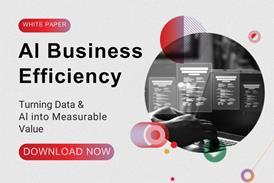- Test and assurance specialist Spirent spoke to TelcoTitans’ Vendor Voice and highlighted how the ongoing reinvention of telecoms networks is necessarily being accompanied by a reset regarding resilience.
- With cloud-native services and applications becoming the new standard as next-generation networks gain prominence, Spirent is urging operators to ‘take testing out of the lab’.
- Continuous testing completes the exponentially more complicated virtualisation and automation network jigsaw.
- Proactive assurance can also speed go-to-market and underpin customer experience for 5G and other new uses cases.
- Significant financial savings available by switching from a traditional capitalised testing approach to a more flexible on-demand model — potentially worth tens of millions of dollars.
- Spirent’s own business has been transformed in recent years, with solutions and customer relationships repositioned and expanded to reflect the radical changes around networks.

Rise of 5G fuels network complexity and IT convergence

The charge towards 5G is crystallising the opportunities and challenges that a cloud-native network infrastructure present for the telecoms industry.
Virtualised infrastructure brings multiple suppliers providing cloud and network functions, with new vendors entering the supply chain at a rate that Spirent believes is unprecedented.
“It’s a pretty radical change in terms of features that we’re trying to coordinate as an industry to unleash the power of 5G”, says Stephen Douglas, Spirent’s Head of Market Strategy.
“ 5G’s use of cloud software is moving us away from isolated or siloed point solutions towards a more holistic, joined-up IT-oriented offering, and, with the complexity of new 5G systems, the complexity of the testing that goes with it increases ten times — a hundred times, even — compared to the past.”
Douglas.
Douglas recognises the need for 5G systems to be agile, but also notes the danger that the increased level of complexity can become an anchor on progress. “The last thing you want is to invest in 5G and discover that the speed at which you can innovate or make changes on the network is incredibly slow”, he says.
Managing this complexity may require operators to adopt practices already in place in the world of IT, to facilitate a surge in software releases and infrastructure updates that contrast with the traditional telco vendor cadence, particularly in areas such as testing.
“ Traditionally, a big vendor would give you a few releases a year. Now, you’re seeing releases every few weeks, and that changes how you think about testing. Historically, validation might take months, but with the new volume and velocity of changes, you can’t simply do that. That’s leading the industry towards the IT principles of continuous testing.”
Douglas.
Meeting the need for speed
Doug Roberts, Spirent’s Senior Vice-President and General Manager for Lifecycle Service Assurance, encapsulates the pressing challenges across network operation, maintenance, and testing within service providers as essentially reflecting the need to move faster.
A key challenge with more open, disaggregated infrastructure is that, while each supplier’s component may meet industry standard specifications, “the specs don’t cover how they all work when five, six, or more of them are put together and you try to drive an OTT delivery model across them”, he elucidates. Any expectation that “everything will work as advertised” is likely to be misplaced. Consequently, within a network environment that will be continuously evolving, Roberts considers it is essential to embed testing that is capable of anticipating problems.
Automating testing is also becoming crucial as the new infrastructure landscape emerges, with Roberts noting that “people simply do not have the time, the resources, the capability, or the expertise to manually deliver sufficient test cases with any viable time to market”.
He also anticipates operators becoming more fluid structurally to facilitate the cloud- and software-driven transformation of networks, blending lab-based teams, maintenance teams, and operations.
“ You can’t just continue with a manual operating procedure model in the lab, then transfer it over to maintenance engineering, and then operationalise it. This is now a DevOps environment: it’s continuously on, and so a lot of these traditional walls that we have seen and experienced historically are starting to be torn down.”
Roberts.
Maintenance engineering is said to be particularly affected by having been “thrust into this new world order of interdependent infrastructure”. After traditionally working with defined structures, virtualisation and cloudification have “dramatically slowed down maintenance engineering’s ability to deploy and manage new infrastructure rollouts”, according to Roberts.

Live operations, meanwhile, are dependent on minimising the time required for triage and troubleshooting, but, again, complexity is heightening the challenge where traditional methods such as passive probing monitoring can prove ineffective in supplying the data required to address or pre-empt network failure.
Reassessment of fundamentals has been reflected in Spirent’s own approach to the market. Historically, Spirent’s focus was on what Roberts described as “the feet on the street” — the engineers, technicians, and tacticians responsible for testing across network parameters. Nowadays, Spirent has a model built on its traditional relationships to deliver a series of verticalised product sets that reflects the strategic relevance of continuous monitoring and assurance in the new network landscape.
“We began building what we call ‘outcome-driven services’”, confided Roberts. These are intended to address service provider goals, such as deploying 5G standalone networks, by identifying the steps needed to certify disaggregated multi-vendor infrastructure and address the ongoing monitoring and maintenance. In doing this, Spirent has created subscription-based access to a library of the test use cases necessary to support operational key performance indicators in a live environment. “While that may seem a very simple change, it has transformed our commercial engagements”, he shares.
If telcos don’t, hyperscalers will
Roberts notes that while communications providers are still evolving their operating models to reflect the changes demanded by cloud-native networks, their hyperscaler partners (and potential rivals) “get this all day, every day”.
This reinvention is already evident across the telco space, with T-Mobile USA, and open RAN-driven DISH Wireless cited as examples, and international groups such as Telefónica and Vodafone also in the mix in determining the nature of future networks through work on standalone 5G.
Internet giants like Google and Amazon Web Services, however, are already adept at placing service provision layers on top of core infrastructure, and, according to Roberts, “they are plugging into models like this at a much quicker pace than traditional service providers”.
Continuous testing: completing the network virtualisation toolkit
Aloke Tusnial, Vice-President for Spirent’s Cloud Business & Solutions, sees continuous testing becoming part of the adoption of DevOps practices within networks, building on the shift towards a continuous implementation and continuous deployment (CI/CD) process. He believes this will help address “thebiggest hole in the virtualisation story” — the absence of a ‘closed-loop’ environment.
“ As you move into the cloud world, and a place where you can actually scale and heal, and achieve the promise of network cloudification or virtualisation, you have to have visibility. If you can’t monitor, if you can’t assure, if you can’t test, and if you can’t measure, then you can’t have that. It’s not a true closed-loop environment.”
Tusnial.
At present, Tusnial sees network faults and crashes being addressed by an approach that can be summarised as “kill it, clean it up, and restart it”. This fails to identify and address the root problems — “‘Restarting’ is not necessarily the answer to everything”. Instead, visibility should be critical: “You need some kind of monitoring, testing and measuring that can tell you in real-time where the challenge is, to help you in fixing it if possible, and then allowing you to close that loop”.
According to Stephen Douglas, delivering network visibility through continuous testing will significantly improve network performance. He anticipates that embedded and active assurance can be employed to provide a feedback loop that utilises synthetic traffic to proactively monitor for service degradations and determine the cause of any issue, so it can be isolated and addressed. Early deployments, including a national rollout in the USA, have reduced trouble tickets by up to 90%, and problem triage times by 75%.
“ Latency tests’ are the new ‘speed tests’. Operators need to know not just whether latency is low, but that it’s low and consistent. That’s the killer value as they start to engage in new use cases for enterprise.”
Douglas.
Douglas envisages that proactive monitoring will become increasingly important in operators’ hybrid environments as subscribers are migrated from 4G to early 5G iterations, and ultimately standalone 5G. “It’s massively important to have visibility as you migrate subscribers, and while traffic moves across all three of those networks simultaneously. We can see this proactive approach gaining a huge amount of traction”, he says.
New (shared) infra needs new performance metrics

Another aspect of the network environment evolution is the greater use of shared infrastructure across fixed, mobile, physical and cloud. The Spirent team consider that new thinking on service level agreements (SLAs) and key performance indicators (KPIs) will be necessary for networks based on shared assets and partnerships.
For Aloke Tusnial, this hybrid environment is already here: “there is no service provider in the world today that owns all its own infrastructure”. Regardless of asset ownership, the service provider remains ultimately responsible for the SLA to the end-customer, “and they need to have visibility into places that are theirs, and places that aren’t”.
“ If service providers are missing SLAs, they need to know, ‘is it because I’m having issues or is it because one of my partners is?’. They need to be proactive and ensure the right level of redundancy at an optimal cost.”
Tusnial.
Stephen Douglas considers the issue of shared infrastructure assurance relevant on the business as well as operational side: “akey question is ‘if we don’t own the infrastructure, what metrics do we need to get into the SLAs with the party who does?’. This needs to guarantee not just the performance of the network but also the end-user experience —because otherwise you have no control over that”.
‘Perceived experience’ is also an increasingly pertinent KPI for service providers, he notes, and closely tied to the focus of 5G services beyond consumer applications.
Reimagining test as a variable cost and driver of efficiency…
The increase in network elements necessitates a rethink on costs, including around testing and assurance, with Aloke Tusnial considering that “when you are working at that massive volume, you can’t afford to be at the same cost structure that you were before”.
He anticipates that, while cost structures are changing around 5G, testing will remain proportionally similar at around 10%–30% of budget although more aligned with deployment costs — as they decrease, so will the cost of testing in a continuous environment. “Testing becomes integrated with what you do, and part and parcel of rolling networks out”, he explains.
In terms of overall operational expense, which remains a hot topic among operators, automation and continuous testing bring promise, according to Stephen Douglas. “The more you can be proactive and automate the process, the bigger the reduction in terms of internal cost overheads, and you can also benefit in areas such as escalations and time to triage, which suddenly reduce”.
There are capital expenditure savings available, too, with Douglas noting that “operators tend to have a pretty big overhead in their lab environments”. He projects that this capex profile can be changed through application of continuous testing: “Ifyou’re building a continuous testing process, the same toolsets and testing methodologies are now used across the lab, staging, and operational environments —just with different test cases depending on where you are on that lifecycle. That means you can dramatically reduce the cost profile of the capex spend in terms of the tooling side”.
According to Spirent, major operators at the forefront of the new cloud-based, usage-based model for continuous testing are already realising savings measured in the tens of millions of dollars.
… and revenue generator
“ Continuous testing becomes a mechanism for service delivery, whatever the industry you’re working with, with autonomous test and measurement embedded in the infrastructure.”
Doug Roberts.
Beyond improving efficiency, Spirent asserts that assurance can be leveraged as a revenue generator for service providers, rather than just a cost centre.
“Nobody has figured out how to make money out of 5G yet”, notes Aloke Tusnial, but the enterprise segment is most promising. “This explains the push to the edge, and the push towards working with IoT vendors on new use cases. Helping industry automate its world — and that’s where the money is going to come from”.
Spirent foresees the emergence of embedded assurance as an enabler of added-value service delivery for industry-specific solutions evolving alongside 5G, IoT, and other next-generation propositions.
As operators seek to ensure they are not cordoned off as connectivity providers, and deliver services that go beyond simply facilitating new enablers such as IoT, they will need to adapt their way of thinking on assurance. According to Tusnial, this change is already happening: “We’re now hearing operators saying ‘I need to meet these SLAs’, or ‘I want to sell this new kind of service, can you help?’. It’s not just questions on testing a network environment; it’s a different conversation”.
As operator engagements move from engineering focus to operational, “the problem statements change”, notes Tusnial. These could revolve around generating revenue, or understanding the limits and potential of use cases. “‘If I want to invest in self-driving cars, how do I ensure that even when I have a black spot in the network, the cars are not going to crash?’, or, if operating thousands of drones, ‘How do you ensure they don’t go into a no-fly zone?’” he shares as examples. According to Tusnial, these use cases are already being explored by operators in markets around the world, with 5G network overlays helping provide control, and measurement and testing helping provide visibility.
Spirent’s own transformation from old to new
Spirent has had its own “natural evolution” that chimes well with the transformation underway in the communications ecosystem. Historically, its telco network-focused and IT-focused sides were quite distinct, but they began encroaching on each other’s territory several years ago, so “it made a lot of sense for us to really merge our skillsets”, says Douglas.
This led to rapidly making solutions cloud-native, tying in with development of another aspect of the business through the creation of a security division. With this element originally focused on the enterprise market, Douglas says Spirent “has been able to realise and leverage that security capability and merge it in with our telco cloud”.
Spirent now divides into two main units, roughly equal in size: Networks & Security for much of the core technology it is traditionally associated with; and Lifecycle Services Assurance, which takes the tools beyond the lab environment. These divisions deliver around 85% of annual revenue, with the remainder related to positioning and global navigation satellite systems.
Profile: Spirent Communications
Spirent Communications is the leading global provider of automated test and assurance solutions for networks, cybersecurity and positioning.
Spirent provides solutions that help communications service providers, network vendors and enterprises accelerate innovation to connect and secure the world. It helps its customers overcome the challenges of a fast-approaching future, and ultimately deliver on their promise to their customers of secure and robust communications.
The vendor’s Innovative solutions address the test, assurance and automation challenges of a new generation of technologies, including 5G, IoT, SD-WAN, cloud, autonomous vehicles and beyond. Spirent places itself by its customers side, supporting their entire product lifecycle as a trusted partner easing the burden of relentless testing demands and new network dynamics, protecting user experiences and assuring service delivery.
VP, Vodafone Client Partner Executive:
Phil Thompson, philip.thompson@spirent.com
Topics
- 5G
- Aloke Tusnial
- Automation
- Cloud
- Customer/User experience (CX/UX)
- Doug Roberts
- Hyperscalers vertical (webscale)
- Industry Voice
- Innovation (R&D)
- Interview
- Network & Infrastructure
- Service assurance
- Spirent
- Stephen Douglas
- Strategy & Change
- Suppliers & SCM
- TelcoTitans Industry Content
- Testing
- Vendor Voice
- Virtualisation (SDN, SD-WAN, NFV, VNF, VRAN)



































